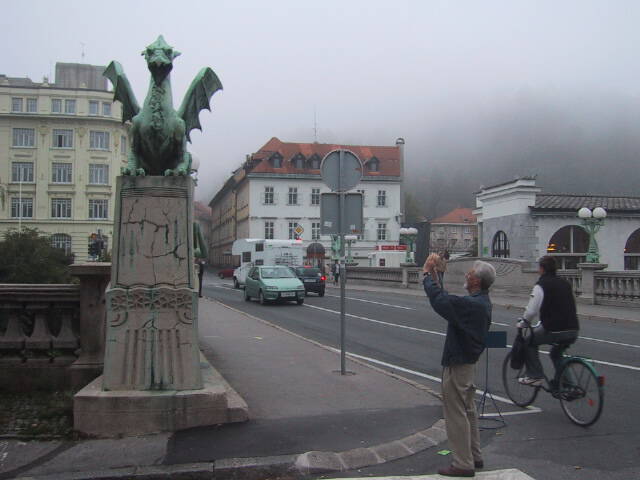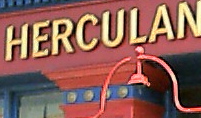Okay, so I have an old iMac, without USB 2.0 ports. This means that transferring data to and from USB devices like flash memory keys and the new iPod shuffle happens at the old USB speed of 12 megabits per second rather than the USB 2.0 speed of 480 megabits per second.
So, the question is: if I bought an iPod shuffle, would I get really frustrated with how long it would take to transfer MP3 files to it at that slower speed?
Let’s do the math.
The cheaper iPod shuffle hold 512 megabytes of music. The slow USB transfer speed that my iMac support is 12 megabits per second. To convert megabits to megabytes, we divide by 8 (there are 8 bits in a byte), so that’s 1.5 megabytes per second. So to transfer 512 megabytes of music would take 341 seconds, or about 5 and a half minutes.
By contrast, if I had USB 2.0 ports, I’d be flinging music at 480 megabits per second, which is 60 megabytes per second. Meaning I could fill up the iPod shuffle in 8.5 seconds.
 If I were a social scientist, what I would study is the “cc” lists in those email messages that friends, family and acquaintances send around of the “here’s a funny joke” or “get a load of this” variety. In those lists of addresses you can see the ties that bind us together; study them, and I think you could make very interesting “social maps.”
If I were a social scientist, what I would study is the “cc” lists in those email messages that friends, family and acquaintances send around of the “here’s a funny joke” or “get a load of this” variety. In those lists of addresses you can see the ties that bind us together; study them, and I think you could make very interesting “social maps.”
Here’s an example: I got an email with the animated penguin image pictured here from a friend. She got it from someone she works with who, in turn, got it from someone who works at the Patterson Palmer law firm in Charlottetown (who sent it to a whole host of people all around PEI) who, in turn, got it from someone in Nova Scotia who seems to have received it from her husband who, in turn, got it from someone at the Hemming Weir Casey law firm in Nova Scotia.
There are over 100 ‘cc’ people listed in the email at this point. And we’re all connected in some obscure way.
For some reason I find this deeply interesting.
I’ve always wondered how Crimestoppers works, especially how they pay out anonymous rewards. Here’s what their website says:
- The co-ordinator is contacted by the caller (tipster) and arrangements made to pay reward.
- The award (cash) is placed in a plain envelope.
- The caller determines the name to be placed on the envelope.
- Arrangements made, with the agreement of the caller, to deliver the envelope to a certain location.
- The co-ordinator delivers the envelope to the location.
- The caller then picks up the envelope.
I share a passion for the “corrections” section of the New York Times with several of my friends. What I didn’t know is that they retroactively update their website with corrections too. Like this article about Ljubljana, one of the corrections to which is (emphasis mine):
In addition, three captions were erroneous. One, on the front page, misspelled the name of a town in Slovenia; it is Piran, not Purin. Another, for a bridge in Ljubljana, mistranslated the Slovenian words Zmajski Most. They mean Dragon’s Bridge; they do not refer to the name of a dragon.
Here’s a photo of my Dad in front of the bridge:

And here’s the photo he took:

Hostel Celica in Ljubljana is a “Youth Hostel, Art Gallery and Former Prison.” Like the youth hostel in Ottawa, the rooms are in the cells.
The building at 1 rue Dijon in Paris has a weblog of its own. From the front page:
This Blog logs all kind of information about the building located at 1 rue de dijon 75012 PARIS - FRANCE People living in publish dayly.
You can rent an apartment in the building this summer.
 The Herculaneum Bridge Hotel in Liverpool had a cameo in Monday night’s episode of In Deep (currently airing on Mondays on BBC Canada).
The Herculaneum Bridge Hotel in Liverpool had a cameo in Monday night’s episode of In Deep (currently airing on Mondays on BBC Canada).
By most standard measures, the hotel’s website is ugly and poorly designed. But for some reason I find it oddly alluring. Perhaps I’ve been entranced by the red and blue colour scheme. I’ve half a mind to go to Liverpool now.
Last night we finished watching a recorded episode of Huff on television. The iBook was plugged into the television, and the QuickTime player was running full screen. Made perfect sense.
Then Catherine went to bed, and I decided to watch the Steve Jobs keynote presentation from Macworld. So I unplugged the computer from the television and brought it over to the couch and started watching.
After ten minutes, I suddenly realized that I could be watching the keynote on the television. So I got up, plugged it into the television and, just like Huff, I watched Steve Jobs on the Big Screen.
I believe I have now experienced convergence in its most primitive form. I watched Huff on the television because, well, it was a “TV programme.” I watched the keynote on the laptop screen because it was “computer stuff.” The irony is that I was using the same player to watch both. Old habits due hard.
I haven’t seen this elsewhere, but I expect that the new Mac mini will become a popular webserver. It’s small, beautiful, and cheap. And it’s more powerful than the almost-new PC that runs this site.

 I am
I am